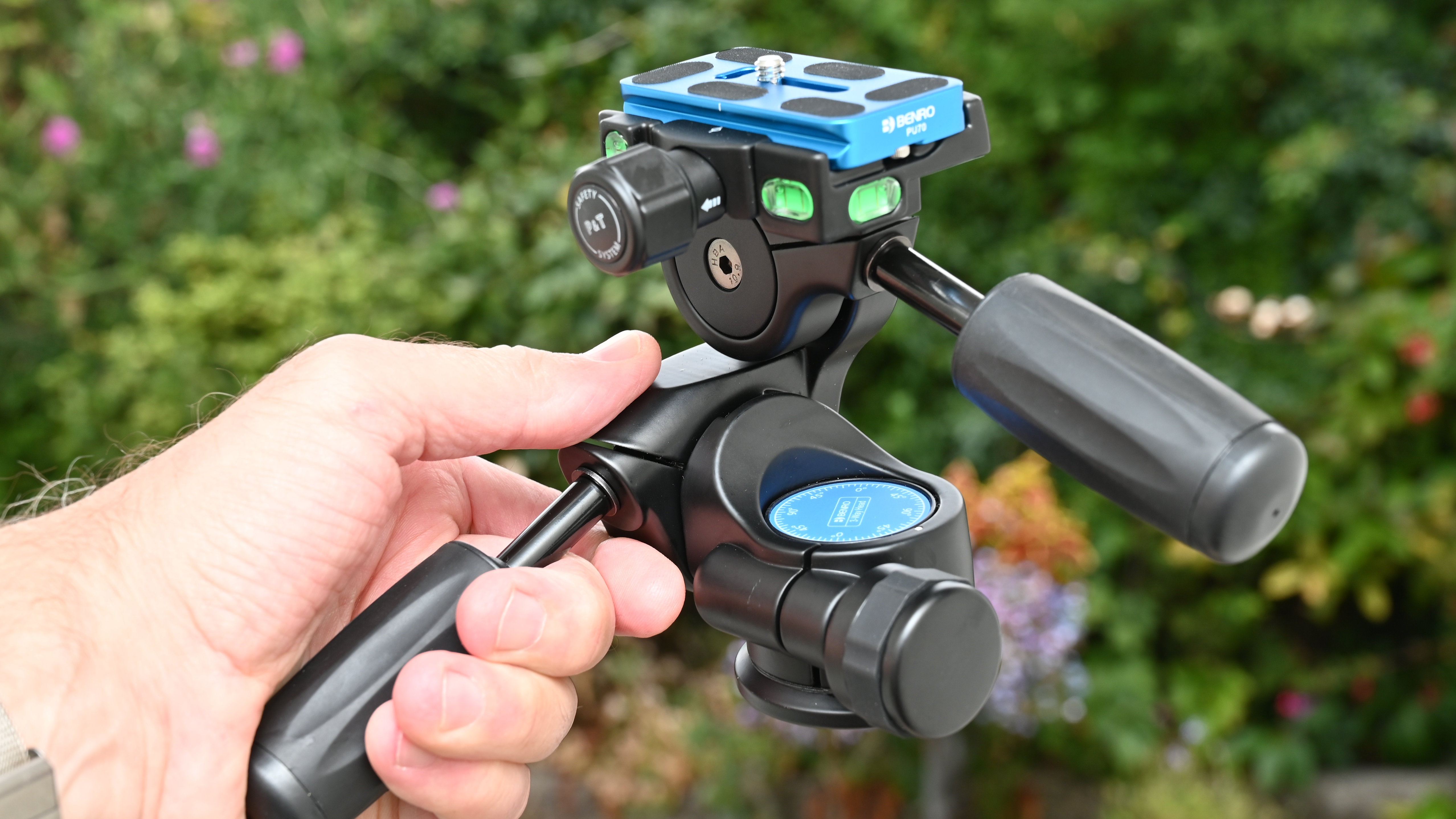The best pan and tilt tripod heads in 2025: precise control for your camera
Also known as 3-way heads, the best pan-and-tilt tripod heads offer extra precision over a ball head

Pan-and-tilt heads aren't as common as standard ball heads, which the majority of tripods come bundled with these days. And it's a crying shame, I say; while ball heads are undeniably more compact and faster to use, with the best pan-and-tilt tripod heads, you can exercise a great degree of sophisticated control over your camera while it's mounted to a tripod.
Some are also known as '3-way heads', due to the fact that they separate horizontal, vertical, and panning motions onto three separate axes. If you want to precisely line up your shot to get the perfect vertical horizon line in a landscape or create a silky-smooth panning effect while shooting video, a pan-and-tilt head is the way to do it.
For more options in camera support, we have a general guide to the best ball heads, and a guide to the best tripods if you also need a set of legs. I've answered a few FAQs about pan/tilt heads at the bottom of this guide if you need a primer – otherwise, let's get started and take a look at the best pan-and-tilt tripod heads to buy right now.
The quick list

My top choice of pan-and-tilt head, this Manfrotto-made option packs in plenty of innovative features but keeps the price relatively affordable.
Read more below
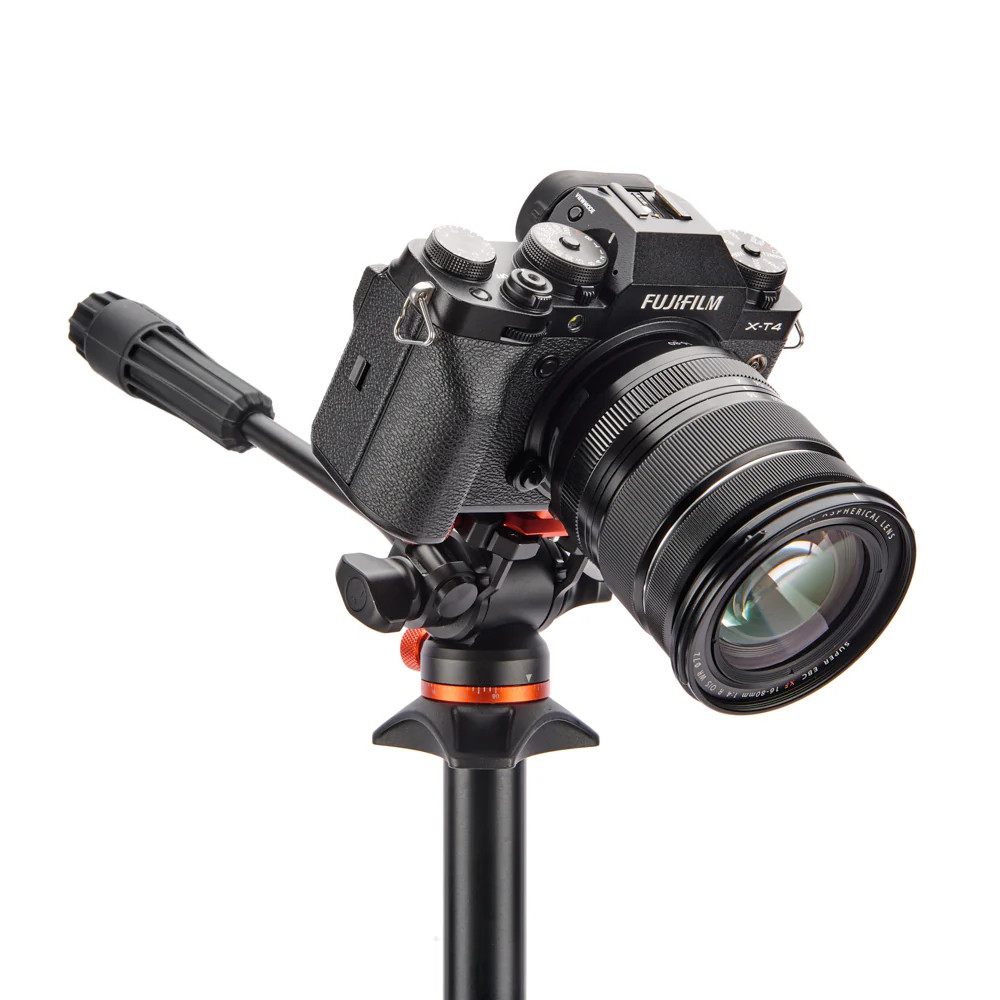
Lightweight and affordable, but made with 3 Legged Thing's customary well-machined quality, the AirHed Trinity is an ideal choice for amateur shooters.
Read more below
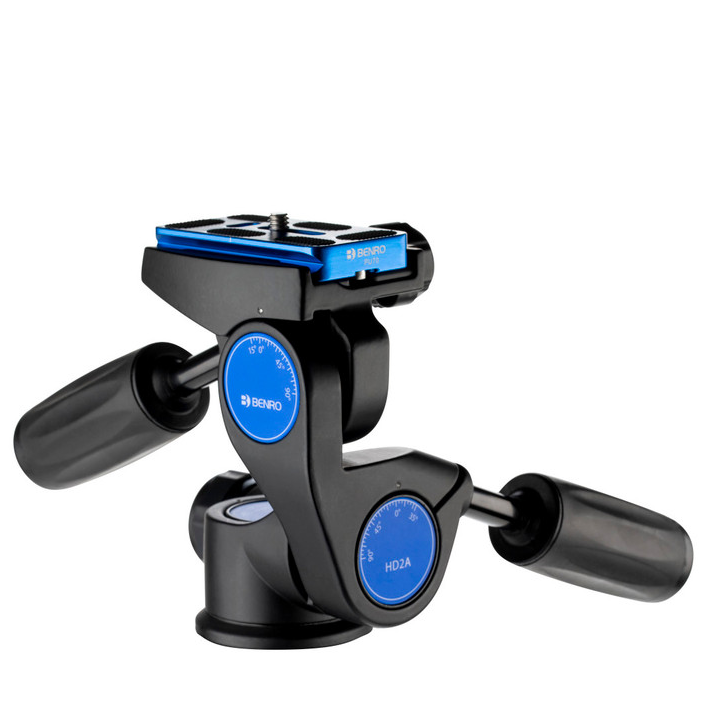
Another lightweight option, Benro's HD2A delivers smooth panning and ergonomic handling. There are also larger and smaller versions available if you have a heavier or lighter setup.
Read more below

Beautifully made, like the majority of Manfrotto gear, this 3-Way Live Head is an ideal choice for travelling filmmakers and photographers who want something portable.
Read more below

More of a 4-way head than a 3-way head, this has two panning mechanisms that make it a good choice for left-handers or those who use L-brackets. While it's light in weight, it is, nevertheless, a solid option.
Read more below
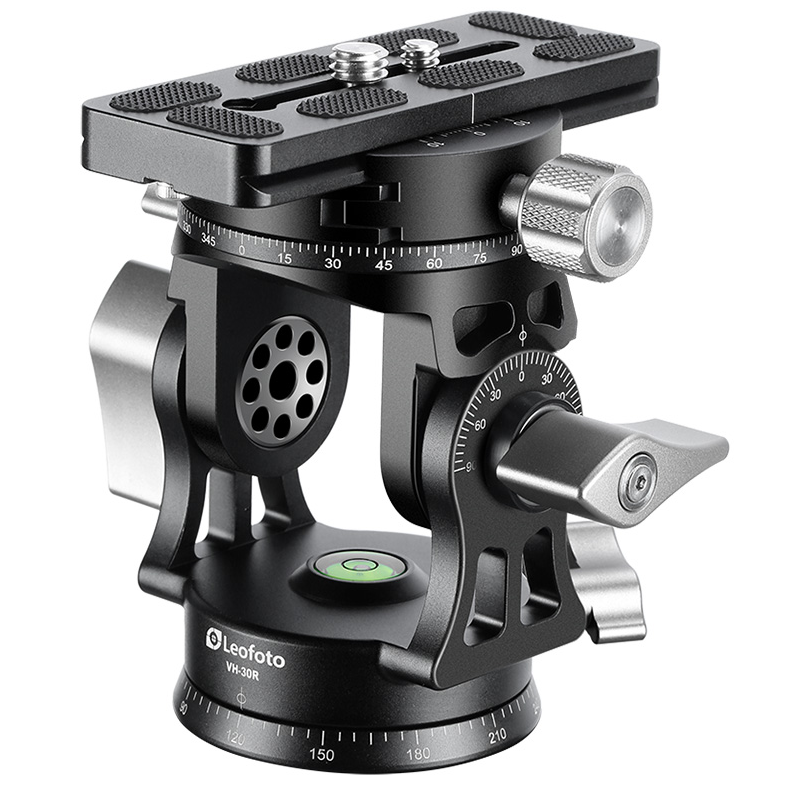
As a 2-way rather than 3-way head, this has no side-to-side tilt but makes up for it with a secondary panning control for leveling horizons. It's marketed as a monopod pan-and-tilt head, but I reckon it's just as useful on a tripod.
Read more below
See the next products

Made from 'technopolymer' plastic, this relatively compact and lightweight head still boasts a strong 10kg / 22lb payload, but is fairly basic and its rigidity could be better.
Read more below

Money no object, then this is the best three-way head that money can buy, with outstanding build quality, super-smooth movement, and a hefty load rating that takes even the heaviest pro setups in its stride.
Read more below

Can't make up your mind between a three-way head or a ball head? This offers the best of both worlds and has a secondary panning base at the top to keep horizons perfectly flat, even if your legs aren't level.
Read more below

Matthew Richards is a photographer and journalist who has spent years using and reviewing all manner of photo gear and is Digital Camera World's chief tester of all kinds of camera supports. He has hand-picked the best pan-and-tilt tripod heads for this guide.
Best pan and tilt heads to buy
Why you can trust Digital Camera World
Best overall
Specifications
Reasons to buy
Reasons to avoid
I’ve long been a fan of Manfrotto's X-Pro 3-way head, thanks to innovative features that enable you to precisely balance cameras, large or small. Designed with three independent locking levers and adjustable friction dampers, it allows for smooth and tailored control over camera positioning, making it particularly well-suited for landscape and architectural photography.
The head features a clever design with retractable handles, which helps save space and makes it surprisingly compact for a heavy-duty unit. Constructed from high-quality aluminum alloy, it boasts a robust 12kg (26.5lb) load rating. Further enhancing its functionality, the head includes a rotational scale marked in 5-degree increments on the panning knob, which is ideal for creating panoramic images. For easy leveling, it is equipped with three spirit levels for both landscape and portrait orientations.
The head utilizes a proprietary Manfrotto 200PL-14 quick-release plate, which, despite not being the standard Arca-type, offers secure and solid support. It was tested with a front-heavy camera setup and demonstrated excellent resistance to wobbling and vibration.
See our full Manfrotto X-Pro 3-Way Head review
Best for beginners
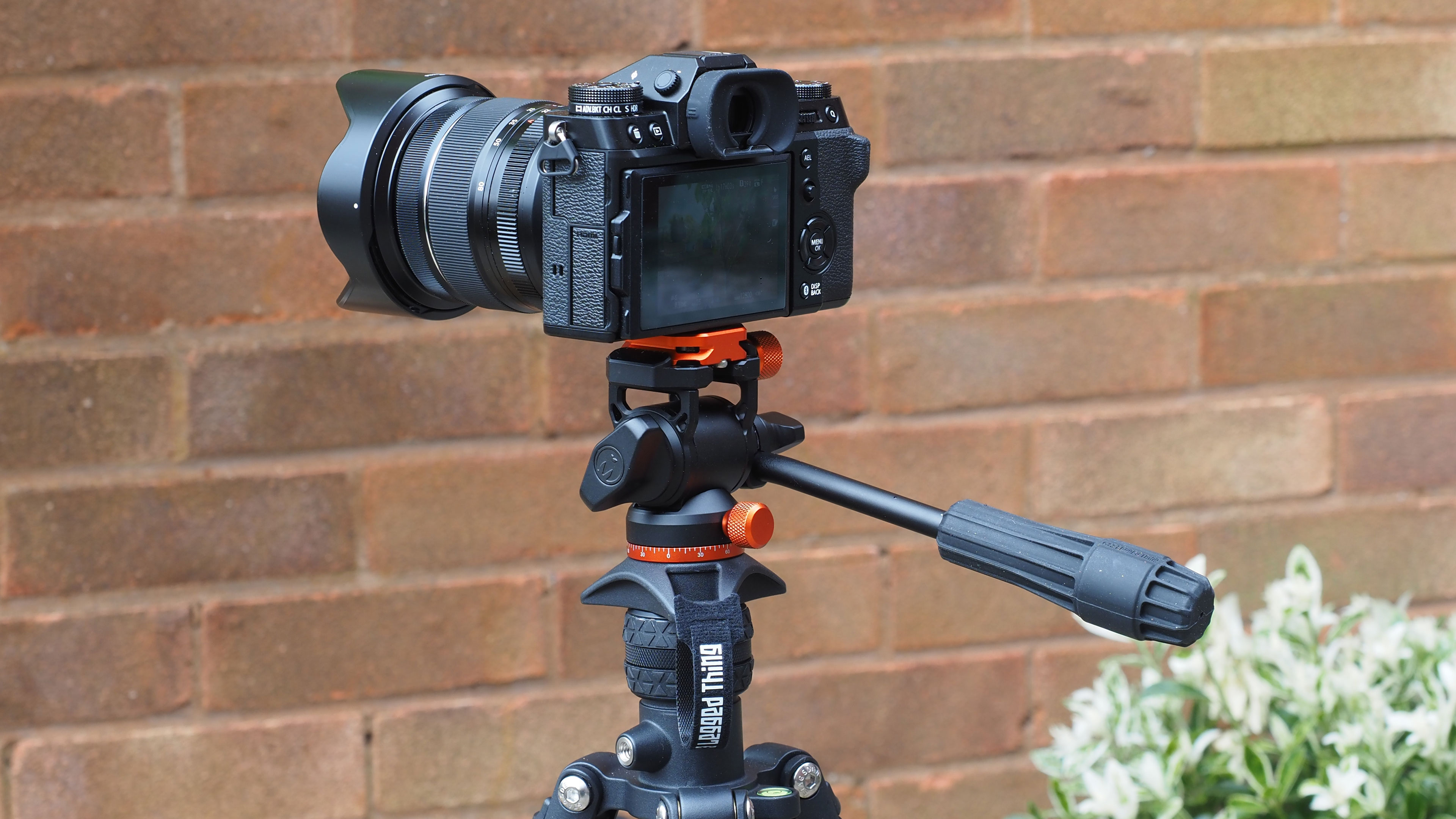
Specifications
Reasons to buy
Reasons to avoid
While it's not quite at the same level as some of the pro heads we'll meet throughout this guide, the lightweight and affordable AirHed Trinity from 3 Legged Thing is the best entry-level choice, and will probably best suit the majority of users. Even though it's a fairly low-cost option, it's still got that smooth operational ‘feel’ that 3 Legged Thing products are known for.
The panning motion, controlled via the detachable handle, feels smooth, with just the right amount of 'drag'. The tilt action has a good degree of spring to it, best suiting lightweight vlogging setups rather than heavy-duty cine cameras and lenses. Realistically, with a payload of 5kg, that's what you're going to be using anyway.
One operational quirk is that the AirHed Trinity's tilting motion doesn't support the use of L-brackets, meaning it may be difficult to shoot vertical video on a conventional camera. There are workarounds though, and it ultimately doesn't detract too much from what is a well-engineered and well-priced pan-and-tilt head.
See our full 3 Legged Thing Airhed Trinity review
Best for vloggers
Specifications
Reasons to buy
Reasons to avoid
Benro's HD2A is a solid example of an unshowy but dependable 3-way head. It gets the job done for setups weighing up to 8kg, and is also Acra-Swiss-compatible for smooth, quick-release action. Three bubble levels allow for precise, accurate camera positioning, and 360-degree panning gives real flexibility and opens up loads of shooting opportunities in both stills and videos. Ergonomic handles make the head easy to pick up and transport, and it has an impeccable eggshell black finish with stylish blue accents.
Handling is smooth and precise, with excellent stability even when supporting a camera with a front-heavy lens. The head offers solid performance, eyecatching design, and good value. The only real downsides are that the handles are not retractable and the lateral swivel range is slightly limited, but overall, the Benro HD2A is a well-engineered and highly functional tripod head.
It actually sits in the middle of a series of three: if the 8kg capacity of this model isn't quite enough to handle your camera setup, then it's also worth considering HD3A, which can support 10kg, or, for those who like to travel light, there's the the HD1A, which is rated up to 5kg.
See our full Benro HD2A review
Best for travel
Specifications
Reasons to buy
Reasons to avoid
This pan-and-tilt head uses a hydraulic damping system to help videographers make the kind of smooth, steady movements that conventional mechanical pan/tilt heads just aren’t built for. The system works well, allowing for small, predictable and consistent movements across all angles, tilts and pans – essential for videography, but the roll axis easily puts it into a valuable portrait mode for stills photography.
The Befree 3-Way Live Head ships with a 200PL-PRO plate but works with all kinds of plates; it’s compatible with Manfrotto RC2 and Arca-Swiss type head attachments.
Downsides? There are a couple of knobs that are a tad plasticky, and one of them can interfere with a camera's battery cover, making it impossible to change a battery without first removing the camera from the tripod. But these minor quibbles don't really detract from what's otherwise a superbly versatile head that works just as well for shooting stills or video.
See our full Manfrotto Befree 3-Way Live Head review
Most flexible
Specifications
Reasons to buy
Reasons to avoid
The unique selling point of the Vanguard VEO PH-38S 3-way pan head is its dual-axis panning mechanism. In addition to the traditional base panning, there's a secondary panning function between the tilt and swivel adjustments, which comes in useful for left-handed photographers as they can position the upper handle to be in a more natural position, and also enables the handles to be in line, which is a great when using L-brackets.
While the main panning mechanism at the base is calibrated, the tilt and swivel handles lack marked reference scales, though they are retractable, providing both precise control and a compact form for storage. The head offers sturdy support, even with a heavy camera and lens combination, shouldering an impressive 10kg (22lb) maximum load, despite only weighing 0.65kg (1.42lb). In all, it's a highly impressive and innovative product that offers great value.
See our full Vanguard VEO PH-38S 3-way pan head review
Best two-way
Specifications
Reasons to buy
Reasons to avoid
As a 2-way rather than 3-way pan-and-tilt head, the Leofoto VH-30R has no side-to-side tilt, but it's made up for with dual-axis panning controls. This feature is particularly useful as it allows a level horizon to be maintained even when the tripod is placed on uneven terrain. The tilt mechanism has a long operating handle, which provides enhanced leverage and control for making smooth, precise adjustments. Indeed, it offers exceptionally smooth and fluid movement for both tilting and panning, which makes it an excellent tool for tracking moving subjects.
Despite its robust construction from aluminum, the Leofoto VH-30R is relatively lightweight, weighing in at just 0.45kg (1lb). However, it can support a substantial maximum load of 15kg (33lb), making it a reliable choice for a wide range of camera and lens combinations. The head is also equipped with an adjustable friction damper and a bubble level to assist with leveling.
Although marketed as a monopod head, it is just as effective when used on a sturdy tripod for tracking subjects like wildlife or aircraft. While the Leofoto VH-30R is not a budget-friendly option, its high-quality build, thoughtful design, and superior performance make it a worthwhile investment for serious photographers and videographers.
See our full Leofoto VH-30R 2-way head review
Best budget

Specifications
Reasons to buy
Reasons to avoid
The Manfrotto 804 3-way head stands out due to its unusual construction. Unlike most competitors, it is crafted from a plastic 'technopolymer' material, which makes it significantly lighter than comparable aluminum heads. Despite its plastic build, it boasts a strong maximum payload rating of 10kg (22lb), and Manfrotto provides a 10-year warranty, demonstrating confidence in its durability.
The plastic construction does come with a slight trade-off in rigidity. While it is durable, the head is more prone to flexing, wobble, and vibration compared to its metal counterparts. On the other hand, it offers independent calibrated scales for tilt, swivel, and pan, with a full 360-degree rotation for panning, which is useful for landscape photography. However, it only has a single bubble level, which is suitable for landscape orientation but not for portrait orientation, unless an L-bracket is used.
The head uses a proprietary Manfrotto 200PL quick-release plate, and the newer 'Mark II' or 'Adapto' version includes retractable handles for tilt and swivel adjustments. This design allows for a more compact storage size while still providing the necessary leverage for precise control. Ultimately, while the Manfrotto 804 provides quick, easy, and precise positioning, its performance in terms of steadiness is not on par with that of aluminum heads. It also offers far better value in Europe and the UK than in the USA and Australia due to its pricing.
See our full Manfrotto 804 3-way head review
Best luxury
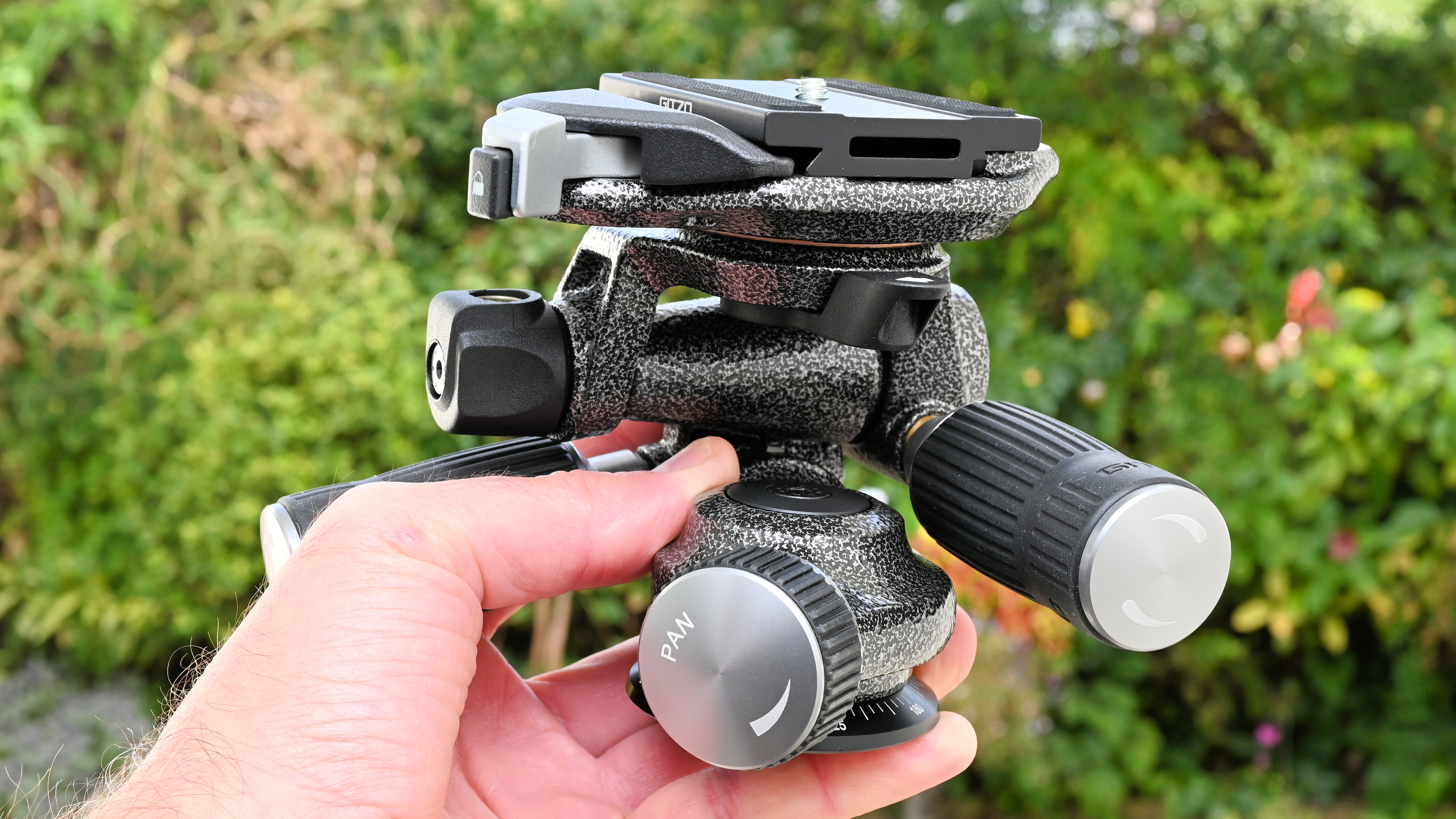
Specifications
Reasons to buy
Reasons to avoid
The Gitzo GHF3W 3-Way Fluid Head is a premium, high-performance product that is something akin to an 'Italian supercar' of tripod heads. Its build quality is exceptional, utilizing a magnesium alloy construction, and it offers incredibly smooth and precise operation, thanks to independent fluid cartridges for each axis. The head's design is both clever and practical, incorporating retractable handles that make it more compact for transport and a rotating camera plate with a locking lever. A rotating bubble level further aids in setup.
The head offers rock-solid support when paired with premium tripod legs and an impressive payload rating of 13kg (28.7lb), which makes it suitable for a wide range of professional camera setups. The super-smooth movement enabled by the fluid cartridges will please even the most demanding videographers and photographers who seek meticulous control.
However, there's no getting away from the fact that this is a hugely expensive product, which is typical of the Gitzo brand, but it's a thing of engineering beauty that could last a lifetime. While its cost may be prohibitive for many, if money is no object, this is the best of the best.
See our full Gitzo GHF3W 3-Way Fluid Head review
Best hybrid

Specifications
Reasons to buy
Reasons to avoid
The Benro FS20PRO Video & Foto Head is a compact and lightweight head that is designed to function as both a ball head and a pan-and-tilt head, making it a versatile product suitable for both stills photography and videography. A dual-axis panning feature has a mechanism at the base and a secondary one at the top to ensure the camera remains level during panning, even when the host tripod is on uneven ground.
The head has a modest 4.5kg (10lb) maximum load rating and features a standard Arca-Swiss quick-release plate, plus a bubble level. The panning handle is removable and has three ¼” threaded sockets for accessories. It has a beautifully engineered and robust feel.
The Benro FS20PRO is a really clever little head that offers good value and is a worthy addition to most travel tripods, particularly the Benro Cyanbird range. Its pros include its dual functionality, ease of camera leveling, and suitability for both stills and video. The main cons are its modest load rating and slightly cramped controls due to its compact size.
See our full Benro FS20PRO Video & Foto Head review
How to choose a pan and tilt tripod head
Here are a few key things to look out for when you're choosing a pan-and-tilt tripod head:
Tightness: You’ll want a stiffer setup when maneuvering a big, heavy camera. Dedicated friction adjustment – or quality clamps that tighten progressively – will keep things under control.
Levels: Precision is the name of the game here, so the more bubble levels, the better, and be sure they’re visible once your camera is mounted. A degree scale on each axis can also be useful.
Effective quick release: Quick-release mounts can sometimes be anything but. An ideal design should live up to the QR moniker, while incorporating an ergonomic safety catch to prevent a dreaded drop.
Compactness: Pan-and-tilt heads with collapsible handles are relatively rare, but thankfully most models will at least let you unscrew the handles for more streamlined transportation.
How we test tripod heads
When we look at heads like pan and tilt tripod heads, the main areas of testing are build quality and performance. Build quality encompasses things like the materials and how durable they are, as well as how fit for purpose each individual part is – something that is important for a mainstay piece of camera equipment.
The performance of a pan-and-tilt head is tested in real-world scenarios with a camera mounted on top. All the features are tested, particularly the panning and tilting actions for smoothness and reliability, and we also assess how easy it is to use different cameras in different configurations. Locking mechanisms are tried and tried again to make sure they are both robust and reliable.
FAQs
Which is better, a pan-and-tilt or a ball head?
Neither is necessarily 'better', it's all about what you're going to use it for. A pan-and-tilt head comes into its own if you want to move your camera on a single plane while on its tripod – such as creating panning or vertically moving shots for video, or stitching panoramas – anything like that.
While the best ball heads will do a decent job, offering extensive movement in a compact body, they don't make it easy to do subtle angle adjustments, especially once you upgrade your camera and/or lens and the whole setup starts getting heavier. They also don't allow you to tweak horizontal and vertical pitch independently. For these kinds of more sophisticated adjustments, you need a pan-and-tilt or 3-way head.
They aren't perfect of course. Setup tends to be slower, as all three axes need to be adjusted and locked individually. They're also not nearly as portable as standard ball heads, due to their bigger build and protruding handles.
How is panning different to tilting?
Both panning and tilting refer to camera movement. Panning refers to when the camera rotates horizontally, and tilting to when it moves up and down or twists from side to side.
The best camera deals, reviews, product advice, and unmissable photography news, direct to your inbox!
Matthew Richards is a photographer and journalist who has spent years using and reviewing all manner of photo gear. He is Digital Camera World's principal lens reviewer – and has tested more primes and zooms than most people have had hot dinners!
His expertise with equipment doesn’t end there, though. He is also an encyclopedia when it comes to all manner of cameras, camera holsters and bags, flashguns, tripods and heads, printers, papers and inks, and just about anything imaging-related.
In an earlier life he was a broadcast engineer at the BBC, as well as a former editor of PC Guide.
- Adam WaringGuides Editor

